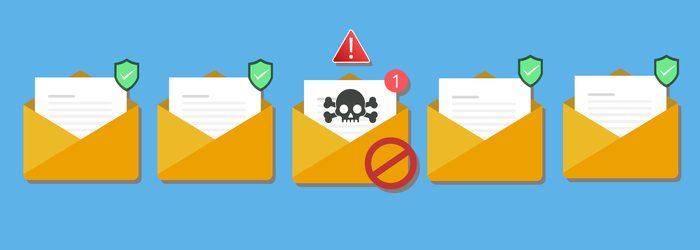In a recent Cisco study, IT leaders considered email threats the number-one security risk for their organizations. 70 percent of respondents said protecting their businesses from email threats is more difficult. 75 percent said that their organization experienced significant impacts due to email attacks.
Email is a necessity and a risk. How do you keep email secure while giving your team the access they need? The key is taking a proactive approach. Educate your team to recognize the risks and help them to do their jobs securely. It’s also about using the right tools and implementing the right business initiatives.
Here are some considerations to help your team recognize a fraudulent email.
- Start with Education – Your employees are your best defense, but they can also be one of your biggest weaknesses. Help them recognize email phishing attempts. Run regular fake phishing campaigns to test and educate them. Start slow and gradually raise the difficulty level. Test monthly.
- Use Multi-factor Authentication – MFA can prevent a bad actor from gaining access to a corporate email account, even if credentials were stolen. MFA automatically notifies an account holder when someone tries to log in, so the user can quickly deny access.
- Keep Software and Patches Current – Keep browsers, software, and plugins updated to help block emails with malicious URLs. Many attacks take advantage of vulnerabilities in common applications.
- Double Check Login Requests – Always carefully check URLs to make sure they’re legitimate. Hackers will go to great lengths to make pages look familiar.
- Enable External Email Warnings – These banners on incoming emails help bring attention to emails impersonating an “internal” request by letting users know that the email has been generated from outside the organization.
- Stay Skeptical – If something doesn’t look or feel right, for example, if it contains facts that are a little off, or contains an urgent response request, don’t trust it. Verify the email, don’t ignore a red flag!
- Perform a Risk Assessment – Perform a risk assessment to understand your exposure. Prioritize your most critical entry points and work down from there to determine the probability of an attack and the risk if you are breached. Then allocate resources.
Be Prepared!
Security software can protect you from an ever-changing threat landscape. The latest technology incorporates machine learning to understand and authenticate email and block advanced attacks. Message quarantine can hold an email to analyze suspicious files and remove them when needed.
Want to learn more? Give your hubTGI rep a call. Let us show you how to protect your organization using the latest security solutions available today!






